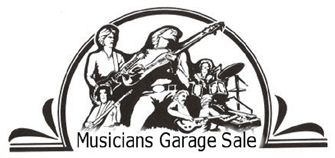How To Muffle Drums*
Drum Set: How To Muffle Your Drums*
When it comes to drum and cymbal sounds, you can have too much of a good thing. Particularly in the studio, excessive ring and overtones can make getting a good clean recorded drum sound difficult. Many drummers apply some kind of muffling to the drum heads, with duct or gaffer's tape on the top heads of the snare and toms being a traditional favorite. On the snare drum it's a common practice to tape a wallet to the head. One sound engineer I know insists that tampons affixed to the heads get the best sound.
In this tech tip, we'll be looking at some of the commercially available devices for muffling drums and cymbals. Many older drum sets used to come with adjustable mufflers mounted inside the drums' shell, which held a pad against the top head. Pearl still makes this kind of Internal Muffler that can attached to the inside of the shell, and as well as a Clip-On External Muffler. Tama 6553's External Muffler also mounts outside the shell on the rim.
Moongels are self-adhesive dampening gels that you may apply to drum heads and cymbals for various degrees of muffling. They don't leave residue on your heads like duct tape.
Most drummers apply quite a bit of dampening to the bass drum, starting with a felt strip placed against the inside of the batter head. In addition, a common practice is to place a pillow or blanket against the inside of the head.
Drum muffling rings, often made of Mylar, are frequently used on the snare and toms. Rhythm Tech's Drum Circle Muffling Ring for the snare is even imprinted with 28 essential drum rudiments to practice.
Some drummers prefer minimal or no muffling, favoring a more resonant, sustained sound. A middle path is to use drum heads that provide various shades of muffling.
Most new drum sets ship with thin one-ply heads that are very resonant, often giving the set's sound excessive ring and overtones. In this week's tech tip we're going to check out some of the many drum heads that are available that muffle or dampen the sound to different degrees. They have the advantage of controlling over-ring without adding tape or anything else to your drum heads.
For decades the most popular drum heads were single-ply coated heads such as Remo Ambassador or Evans G1. While the sound is lively, the coating gives them a slightly mellower tone than clear one-ply heads. Many drummers still prefer a coated head on the snare drum as the coating is necessary when playing with brushes.
Two-ply heads have a slightly more dampened tone with quicker decay than single-ply heads. Examples of coated two-ply heads include the Remo Pinstripe, Aquarian Performance II or Response II, and Evans G2 series. Evans Hydraulic heads, two-ply heads with oil embedded between the plies, have an extremely muffled, dry sound that became very popular in the '80s.
Power dot heads are single-ply with a smaller Mylar dot, and offer a focused sound that's somewhere between single and two-ply. Reverse dot heads have a dot on the bottom side of the head. Some heads come with muffling rings around the perimeter of the head, including the Aquarian Studio-X and Focus-X.
Drummers use a variety of specialized heads on the bass drum, which out of the box tends to have enormous resonance and over-ring. Popular muffling bass drum heads that drummers use to attenuate the bass drum's sound include the Remo Powerstroke 3, Aquarian Superkick II, plus Evans EQ4 and EMAD heads. Many drummers also use a resonant front bass drum head with its own muffling ring and a pre-cut hole for microphone placement. The hole also allows placement of a small pillow or blanket against the head for additional muffling if desired. Examples of these kinds of heads include the Aquarian Small Hole Black Regulator, Regulator Large Hole, and the Evans EQ3.
It's a popular practice to stick a self-adhesive beater pad on the bass drum batter head where the beater strikes it in order to protect the head from excessive wear.
*Harmony Central
